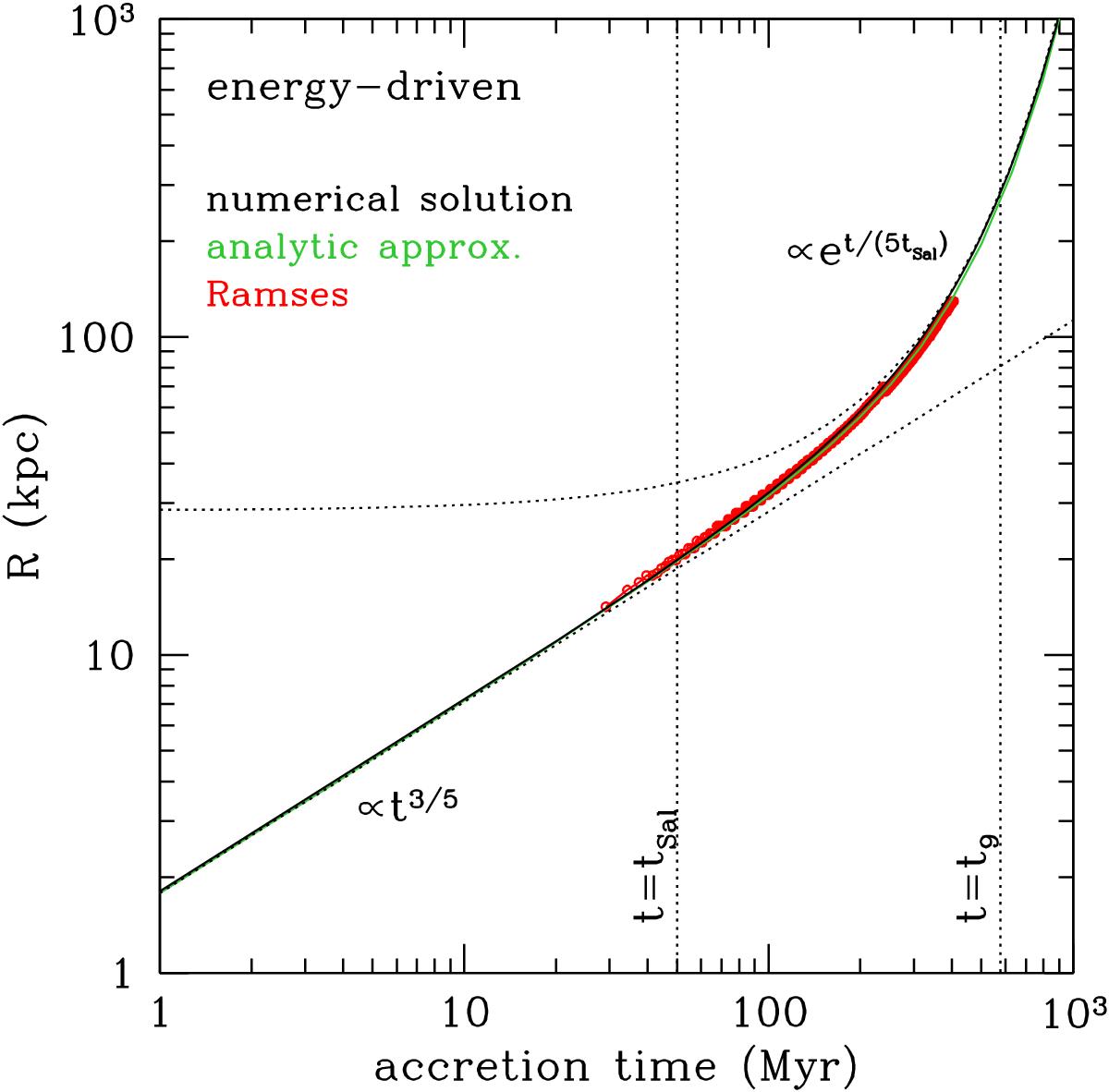Fig. 2

Time evolution of the radius of a hot gas bubble inflated by a wind from an early SMBH accreting at its Eddington limit (energy-driven case). The following parameters are assumed: fw = 0.05, λ = 1, M0 = 104M⊙ (hence Lw,0 = 6.3 × 1040 erg s-1), ϵ = 0.1, ρgas = 10-28 g cm-3. The black solid curve shows the numerical solution obtained for the equation of motion (Eq. (13)) assuming an exponentially growing wind with Lw(t) = Lw,0et/tSal and assuming R,v → 0,0 for t → 0. The analytic approximation to the numerical solution (Eq. (16)), is shown by the solid green line. The purely exponential (but unphysical) solution given by Eq. (14) is shown by the black dotted curve. The black dotted line shows the solution obtained for a constant energy source Lw(t) = Lw,0 (Eq. (17)). The vertical dotted lines mark the Salpeter time tSal and the time t9 needed to grow the SMBH to 109M⊙ as labelled. The bubble radius scales as t3 / 5 for t ≪ tSal and et/ (5tSal) for t ≫ tSal. The red points show the results of a low-resolution simulation run with the hydrodynamical code RAMSES assuming the same input parameters. The results of the simulation are in excellent agreement with the numerical solution to Eq. (13).
Current usage metrics show cumulative count of Article Views (full-text article views including HTML views, PDF and ePub downloads, according to the available data) and Abstracts Views on Vision4Press platform.
Data correspond to usage on the plateform after 2015. The current usage metrics is available 48-96 hours after online publication and is updated daily on week days.
Initial download of the metrics may take a while.


